Discover 35 hidden attractions, cool sights, and unusual things to do in Erlangen (Germany). Don't miss out on these must-see attractions: Bohlenplatz, Botanical Garden Erlangen, and Schloss Erlangen. Also, be sure to include Neustädter Kirche in your itinerary.
Below, you can find the list of the most amazing places you should visit in Erlangen (Bavaria).
Table of Contents
Bohlenplatz
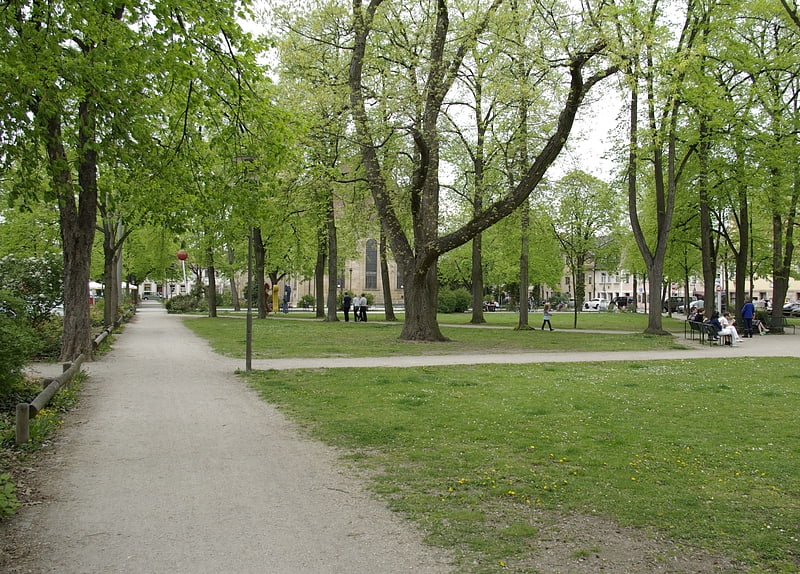
Park in Erlangen, Germany. The Bohlenplatz is a town square in the city of Erlangen, in the German state of Bavaria. It is known for its green area and is the site of a traditional Erlanger flea market. Bohlenplatz is the location of a one-time German church that is now used under the name Kreuz+Quer - Haus der Kirche Erlangen as an event site for the Evangelical Lutheran deanery of Erlanger.[1]
Address: Bohlenplatz 1, Erlangen
Botanical Garden Erlangen

Also known as: Botanischer Garten Erlangen
19th-century university botanical garden. The Botanical Garden Erlangen is a botanical garden, which is 2 hectares in size, maintained by the University of Erlangen-Nuremberg and located on the north side of the castle garden in the city center at Loschgestraße 3, Erlangen, Franconia, Germany. It is open daily except Monday.
The garden's origins date back to 1626 when the hortus medicus was established in Altdorf bei Nürnberg. In 1747 the first botanical garden in Erlangen was established in front of the former Nuremberg Gate, and since 1828 the botanical garden has been established at its current location.
Today the garden contains about 4,000 species representing a wide range of plants of different climates, including those maintained within greenhouses (about 1700 m2). The garden also contains Neischl Grotto, an artificial cave renovated in May 2008. The Herbarium Erlangense is a herbarium containing about 158,000 records from around the world.[2]
Address: Loschgestr. 1-3, 91054 Erlangen
Schloss Erlangen
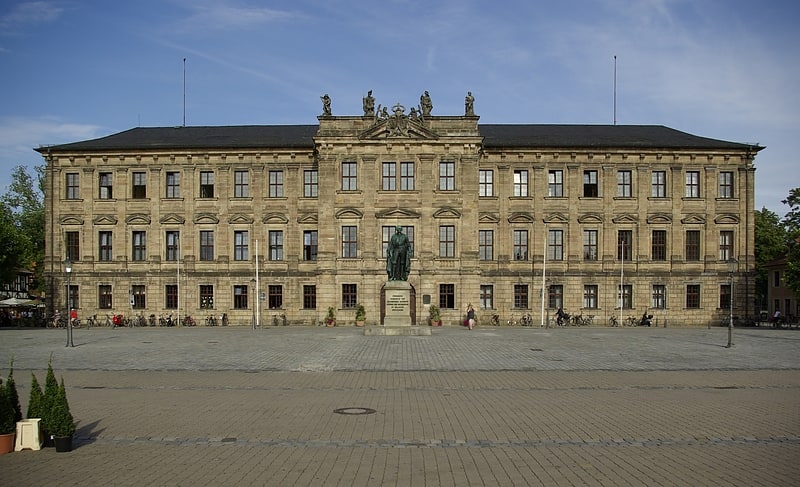
Building in Erlangen, Germany. The Schloss Erlangen is a residence in Erlangen, built between 1700 and 1704 by George William, Margrave of Brandenburg-Bayreuth. Work was initially led by Antonio della Porta and after his death in 1702 by Gottfried von Gedeler. It was the first baroque building built from scratch in Franconia.
Christian Ernst moved his third wife Margravine Elisabeth Sophie of Brandenburg into the Schloss in 1703 when it was still incomplete, giving it its initial name, the Elisabethenburg. Behind it was a 280 metre wide and 550 metre long garden with an orangery (completed in 1706), the Konkordienkirche (completed in 1706, now the Geological Institute), the Hugenottenbrunnen fountain, an equestrian statue and a now-lost Sylvan theater.
After a short time as a princely residence, the castle served as a widow's residence until the early 19th century. It suffered several fires in the 18th century and on 14 January 1814 a final serious fire broke out in a roof space filled with rubbish - it could not be extinguished since the temperature was -25 °C and the water froze in the hoses and even once the water had been heated the syringes could not pump it high enough. The castle was completely destroyed and only its furniture was saved.
It was only rebuilt between 1821 and 1825, to plans by the university architect Friedrich Wilhelm Örtel with much flatter roofs than the original structure, and used to house the library of the Friedrich-Alexander-Universität. It was used as a reserve hospital during the First and Second World Wars and after 1945 it has only been used by the university.[3]
Address: 4 Schloßplatz, Erlangen
Neustädter Kirche
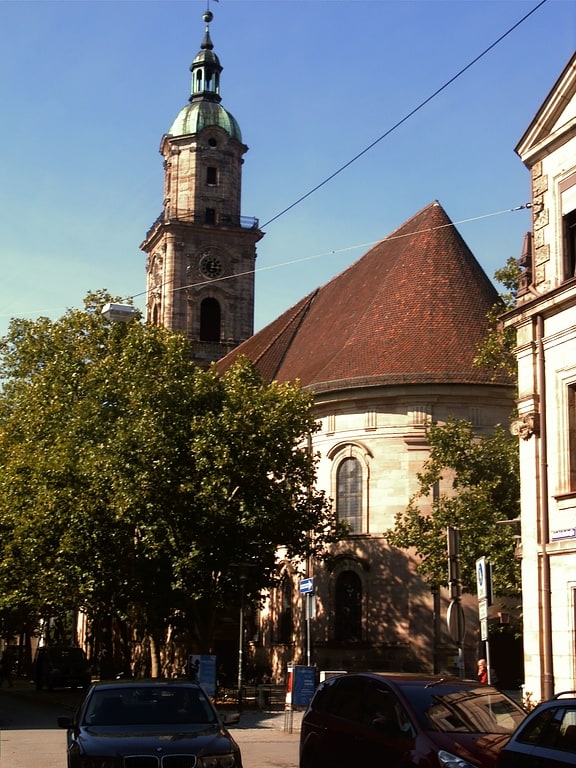
Evangelical church in Erlangen, Germany. Neustädter Kirche is one of three large downtown churches of the Baroque old town of Erlangen. Germany. The church is Lutheran. It dominates the town, together with the Reformed Hugenottenkirche and the Lutheran Altstädter Kirche.[4]
Address: Neustädter Kirchenpl. 2, 91054 Erlangen
Schlossgarten

Castle Park-the Baroque-Romantic Castle Park in Erlangen located at the Margrave Castle, founded in 1700 as one of the first Baroque Franconia gardens. The Baroque Orangery was created soon. From 1786 the park was transformed into an English park. In 1825, a botanical garden was created in its northern part. In 1849 he was made available to the audience. Currently, the park's area is reduced by about half due to the creation of numerous university buildings, including clinics, around the park.
Address: Schlossplatz 1, Erlangen
Markgrafentheater Erlangen
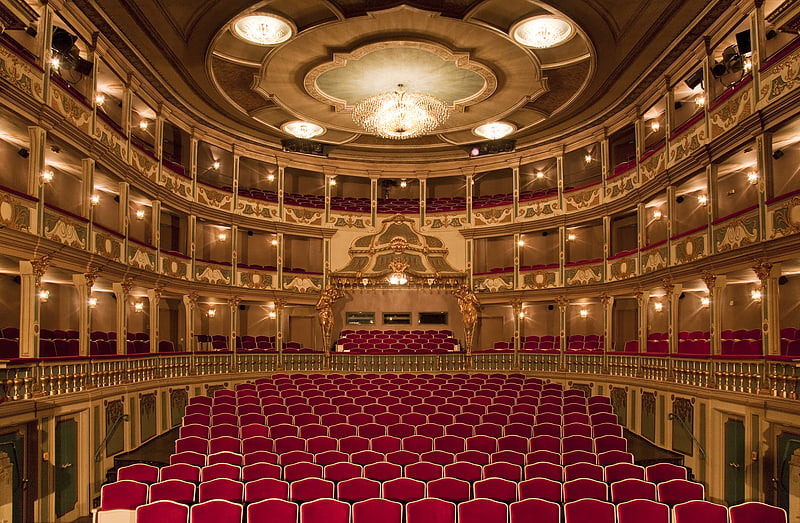
Also known as: Markgrafentheater
Theater. Markgrafentheater Erlangen is a theater in Erlangen, Bavaria, Germany. It was opened in 1719, and celebrated its 300-year anniversary in 2019.[5]
Address: 2 Theaterplatz, Erlangen
Aromatic garden

The Aroma Garden Erlangen is a public garden of the Friedrich-Alexander-University Erlangen-Nuremberg, designed with aromatic plants. It is located in the middle of the city of Erlangen in the landscape conservation area at the Palmsanlage below the Ludwigsbrücke and the Schwabach. When the garden was opened in 1981 after two years of construction, it was the first garden of its kind in the world. About 120 native and also foreign aromatic plants grow in the 8,900 m² area, which form aromatic substances and are used as medicines, spices and for cosmetic preparations.
Hugenottenkirche
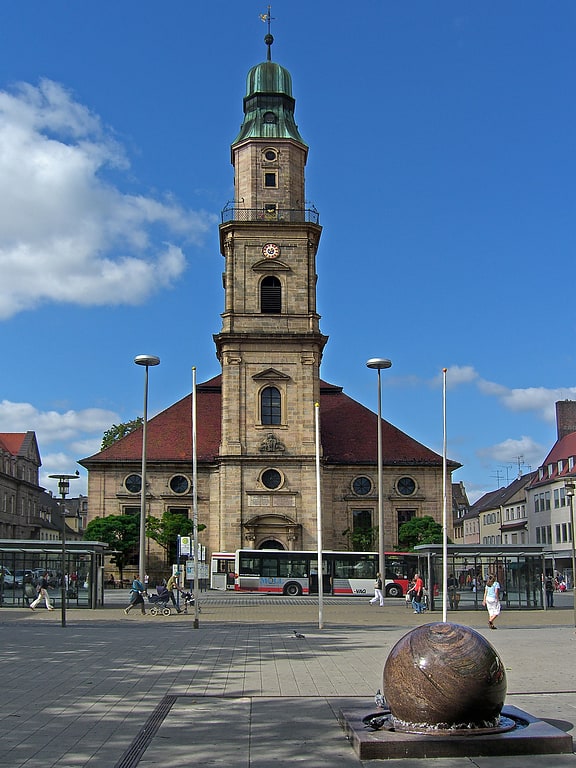
Huguenot church - the Baroque Calvinist church, located in Erlangen.
Address: Bahnhofpl. 3, 91054 Erlangen
E-Werk Kulturzentrum

Concerts and shows, Concert hall, Music venue
Address: Fuchsenwiese 1, 91054 Erlangen
Stadtmuseum Erlangen
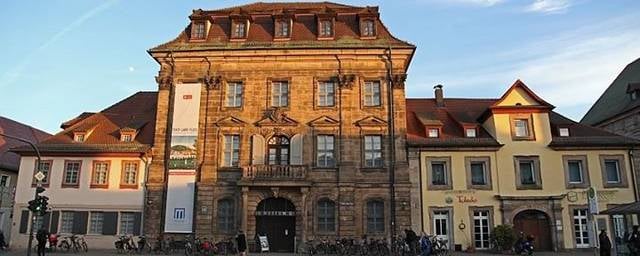
Museum, Specialty museum, History museum
Address: Martin-Luther-Platz 9, 91054 Erlangen
University of Erlangen-Nuremberg
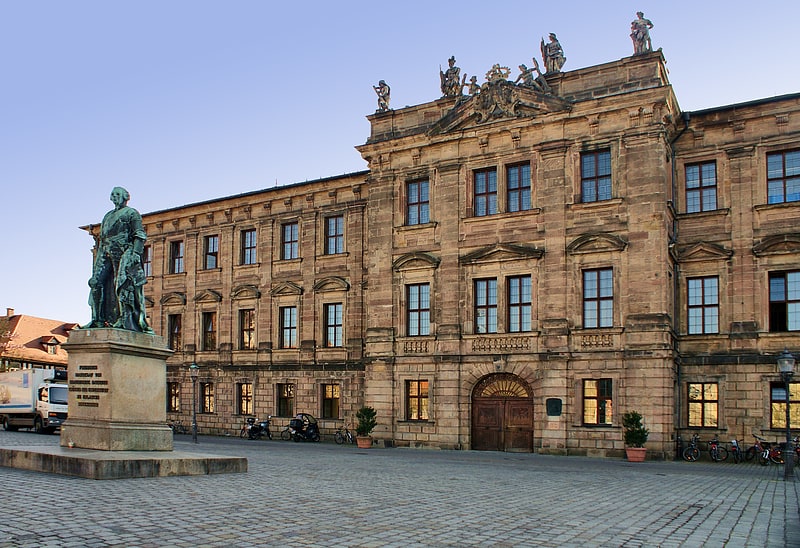
Also known as: Friedrich-Alexander-Universität Erlangen-Nürnberg
Public university in Erlangen, Germany. Friedrich-Alexander-Universität Erlangen-Nürnberg is a public research university in the cities of Erlangen and Nuremberg in Bavaria, Germany. The name Friedrich–Alexander comes from the university's first founder Friedrich, Margrave of Brandenburg-Bayreuth, and its benefactor Alexander, Margrave of Brandenburg-Ansbach.
FAU is the second largest state university in the state of Bavaria. It has 5 faculties, 24 departments/schools, 25 clinical departments, 21 autonomous departments, 579 professors, 3,457 members of research staff and roughly 14,300 employees.
In winter semester 2018/19 around 38,771 students (including 5,096 foreign students) enrolled in the university in 265 fields of study, with about 2/3 studying at the Erlangen campus and the remaining 1/3 at the Nuremberg campus. These statistics put FAU in the list of top 10 largest universities in Germany. In 2018, 7,390 students graduated from the university and 840 doctorates and 55 post-doctoral theses were registered. Moreover, FAU received 201 million Euro (2018) external funding in the same year, making it one of the strongest third-party funded universities in Germany.
FAU is also a member of DFG (Deutsche Forschungsgemeinschaft) and the Top Industrial Managers for Europe network.[6]
Address: Neustädter Kirchplatz 1, Erlangen
Galerie im Treppenhaus
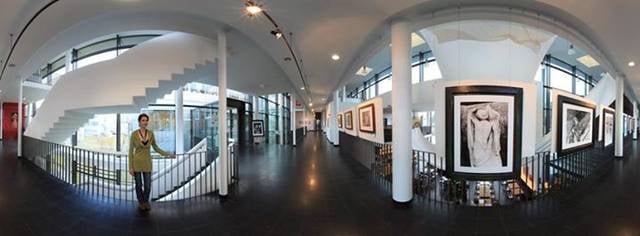
Museum
Address: Henkestraße 91, 91052 Erlangen
Kunstpalais
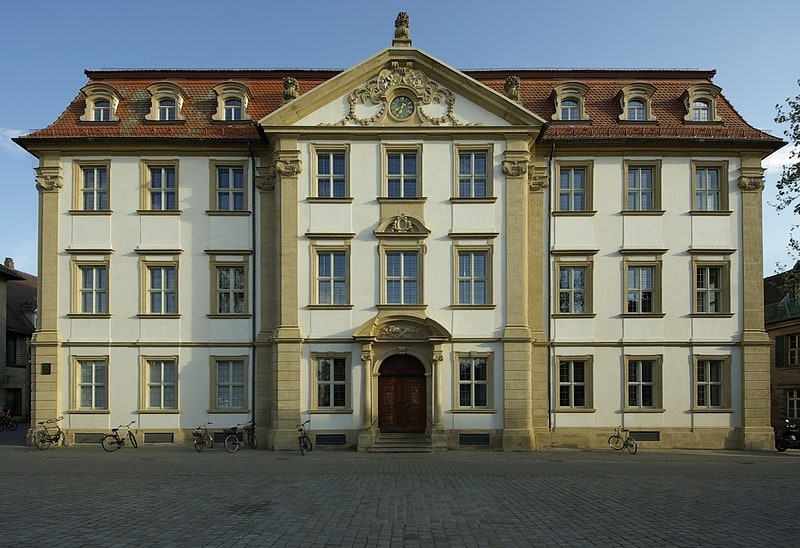
The Kunstpalais Erlangen is the successor institution of the Städtische Galerie Erlangen. Since 1974, it has been located in the Palais Stutterheim, which was built between 1728 and 1730 by order of and for Christian Hieronymus von Stutterheim and is situated in the center of the Huguenot city. After a two-year renovation phase, the Kunstpalais opened in 2010 with exhibition space on the first floor and basement of the Palais Stutterheim doubled to more than 500 m² under founding director Claudia Emmert.
The exhibition program of the Kunstpalais, conceived by Claudia Emmert, focused on relevant positions of the international art scene that offer a connection to contemporary discourse within and outside of art. Conceptual references to questions of literature, philosophy and film were given special consideration. Interdisciplinary accompanying programs, among others in cooperation with the Friedrich-Alexander-Universität Erlangen-Nürnberg (FAU), anchored the content of the art on a broad social level. Amely Deiss has been the new director of the Kunstpalais and the Städtische Sammlung since February 2015.
The Städtische Sammlung Erlangen belongs to the Kunstpalais. It comprises more than 4500 graphics, multiples, artists' books and portfolios. It reflects essential currents of international art after 1945 and sees itself as a history of ideas of art, which is continued with the targeted acquisition of selected contemporary graphics and photographs.
In the summer of even-numbered years, special exhibitions are usually held on the premises of the Kunstpalais as part of the Comic Salon Erlangen.
Address: Marktpl. 1, 91054 Erlangen
Bräuningshof
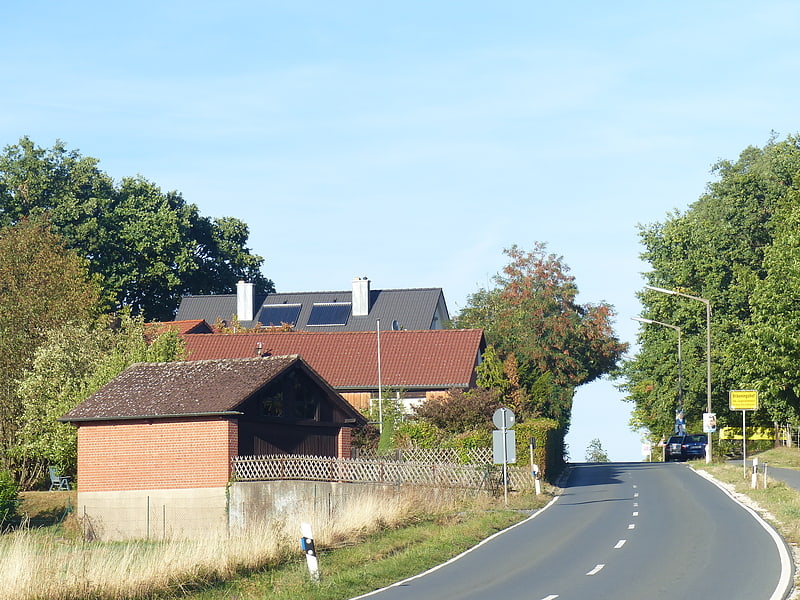
Bräuningshof is a district of Langensendelbach in the Upper Franconian district of Forchheim. It lies between the cities of Erlangen and Forchheim. In this formerly rural town, most of the inhabitants go to work in Erlangen today.
The name of the village Bräuningshof was first mentioned with Bruningeshoven in 1158. It is traced back to the family name "Bräuning" or "Bruning", which at that time often occurred in Franconia.[7]
Church of the Redeemer
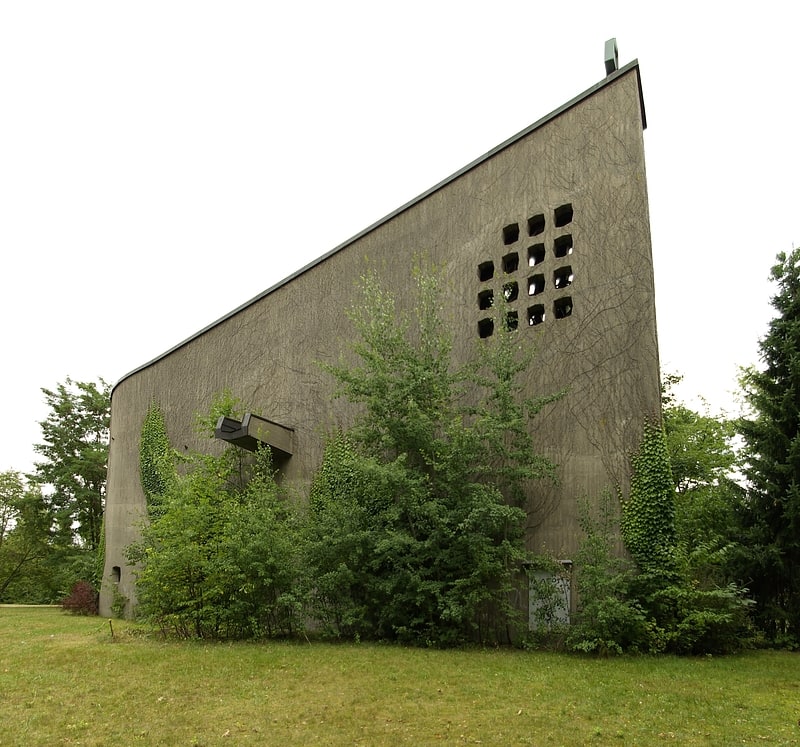
Church
Address: Donaustraße 8, 91052 Erlangen
Neischl-Grotte
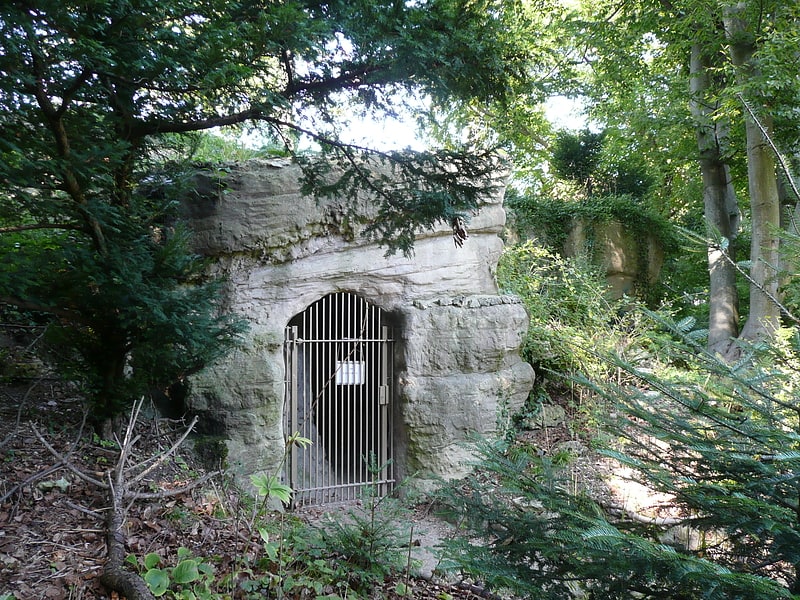
Theater in der Garage

Theater Erlangen is a spoken theater in Erlangen. Venues are the Markgrafentheater, the studio stage in the Theater in der Garage and the Erlangen traditional cinema "Glocken-Lichtspiele".
Address: Theaterstraße 5, 91054 Erlangen
Ferris Barracks
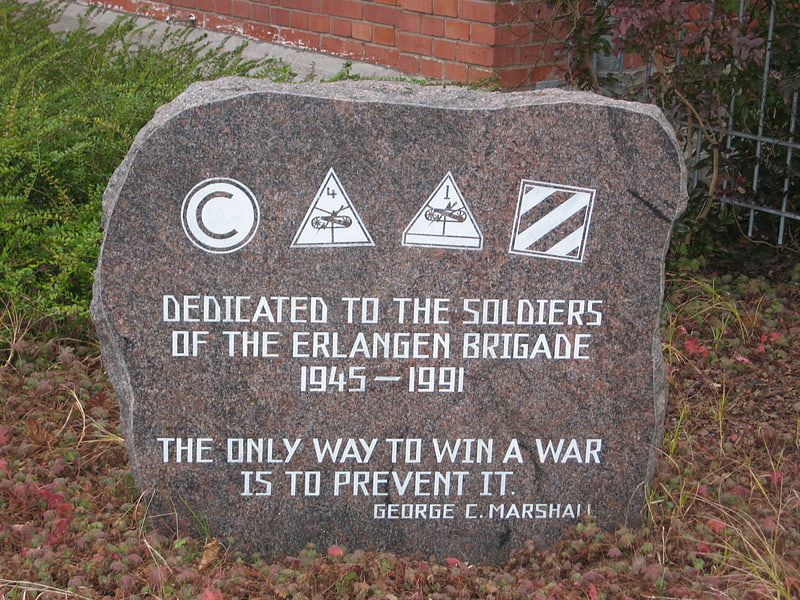
Ferris Barracks is a former US military garrison located in Erlangen, a Middle Franconian city in Bavaria, Germany. It was active as a US military base between 1945 and 1994. The facility was occupied after World War II and designated Ferris Barracks in honor of Second Lieutenant Geoffrey Cheney Ferris. Ferris Barracks was closed on 28 June 1994, and officially turned over to the German government. Though largely dismantled, certain historic buildings and monuments have been preserved and converted for alternative use. The area has undergone extensive construction and is now referred to as Röthelheimpark.[8]
Orangerie Erlangen
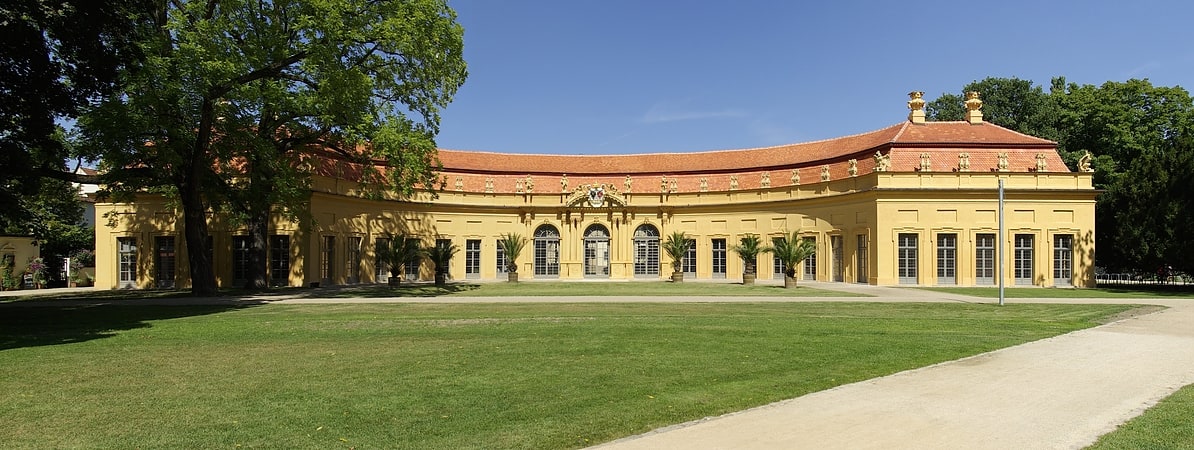
Address: Schloßgarten 1, Erlangen
Kunstmuseum Erlangen

The Erlangen Museum of Art is a regional exhibition house, archive and museum for contemporary art in Erlangen. It is located in the Loewenichsche Palais. Since July 2016, the sponsor is the city of Erlangen.
Since 1998, the art museum has exhibited works of art created after 1945 by artists with special ties to the Nuremberg or Erlangen region. The exhibition rooms, which cover around 300 square meters, are located on the second floor of the Loewenich Palace and the southern extension built in 2002. Five to nine individual, group or theme exhibitions are shown each year, both by established and young artists, as well as commemorative exhibitions of important post-war artists of the region. Paintings, graphic art, sculpture and photographs are exhibited. There are also exhibitions of works owned by local collectors. In addition to exhibition activities, an archive, library and art collection of regional art are being developed. The building also housed the Oskar Koller Foundation from 2006 to 2009.
The building, which had previously been used by the Deutsche Bundespost, was acquired in 1998 by the Förderverein Kunstmuseum Erlangen e. V. (from May 2001 Kunstmuseum Erlangen e. V.). This had been founded in 1989 out of the Erlangen Art Association. In 2016, the association handed over the sponsorship of the art museum to the city of Erlangen.
Address: Loewenichsches Palais, Nürnberger Straße 9, Erlangen
Brucker Wasserrad
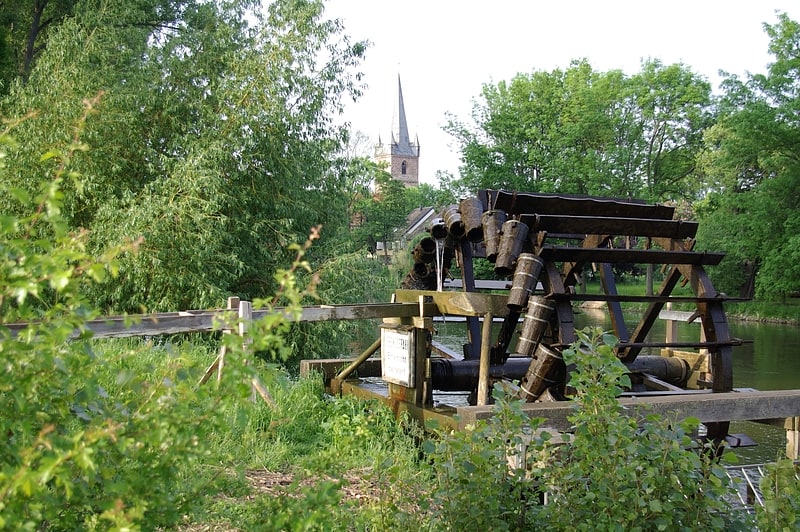
Watermill
St. Martinkirche

Church
Address: 1 Altstädter Friedhof, Erlangen
Neustädter Friedhofskirche
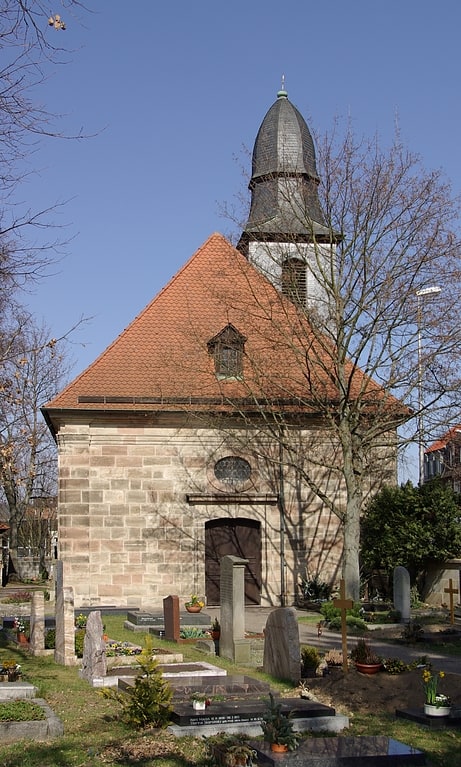
Church
Address: 24 Äußere Brucker Straße, Erlangen
St. Kunigund Kirche
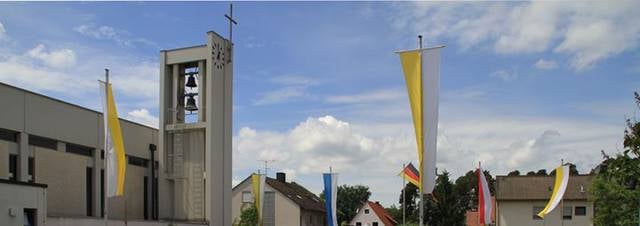
Church
Address: Holzschuherring 40, 91058 Erlangen
Ehemaliges Postamt
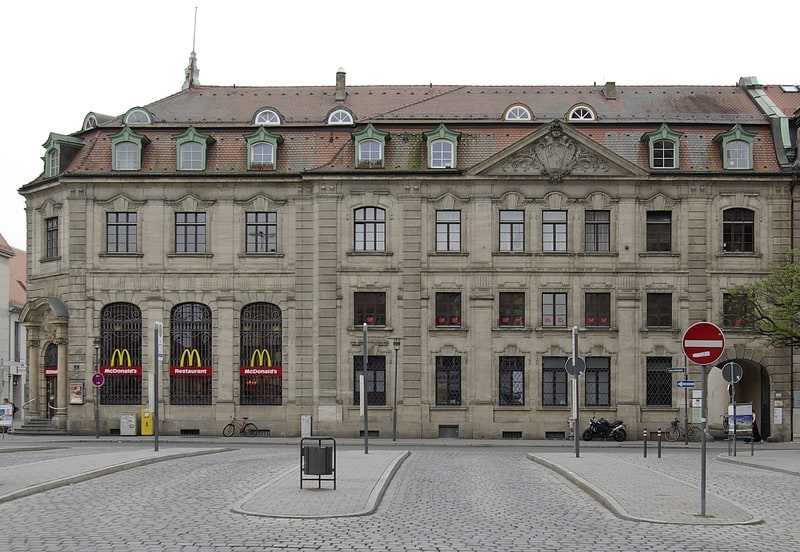
Address: 1 Hugenottenplatz, Erlangen
Exerzierplatz

The parade ground is a nature reserve located on a former military site in the city of Erlangen. It is one of the few nature reserves within a major German city and part of the Franconia sand axis.
Burgbergkapelle
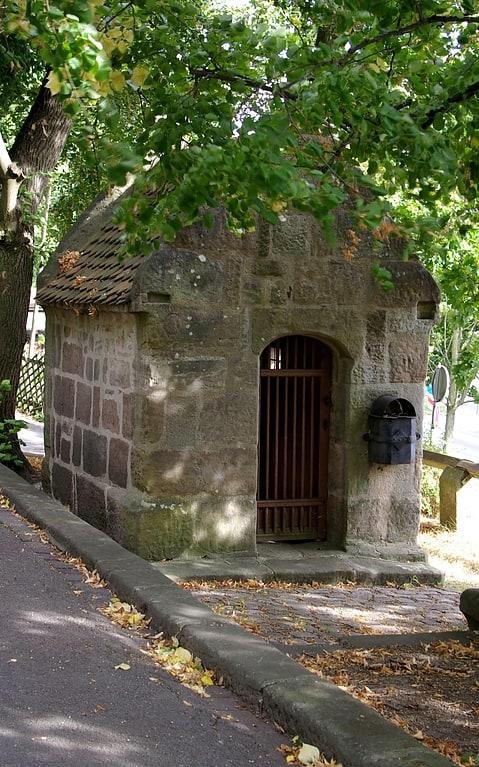
The Burgberg Chapel is a small sandstone chapel on Erlangen's Burgberg, just a few steps from the Bergkirchweih festival grounds. It is assigned to the parish of the Evangelical Lutheran Altstädter Church.
Address: Böttigersteig 8, 91054 Erlangen
Ehemaliges Französisch-reformiertes Spital

Address: 2 Goethestraße, Erlangen
Weihnachtsmarkt Altstädter Kirchplatz
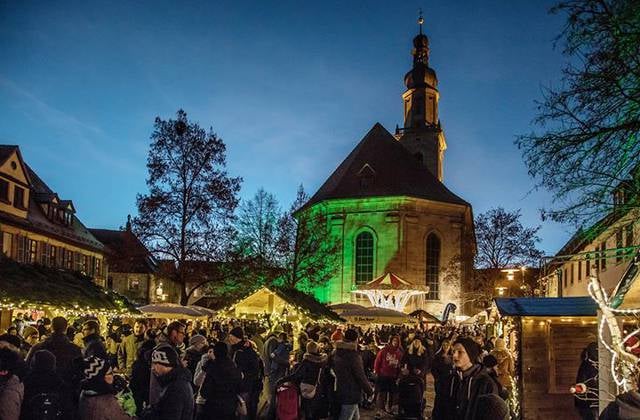
Universities and schools, Square
Address: Altstädter Kirchenplatz, Erlangen
Kollegienhaus

Also known as: Friedrich-Alexander-Universität Erlangen-Nürnberg
Public university in Erlangen, Germany. Friedrich-Alexander-Universität Erlangen-Nürnberg is a public research university in the cities of Erlangen and Nuremberg in Bavaria, Germany. The name Friedrich–Alexander comes from the university's first founder Friedrich, Margrave of Brandenburg-Bayreuth, and its benefactor Alexander, Margrave of Brandenburg-Ansbach.
FAU is the second largest state university in the state of Bavaria. It has 5 faculties, 24 departments/schools, 25 clinical departments, 21 autonomous departments, 579 professors, 3,457 members of research staff and roughly 14,300 employees.
In winter semester 2018/19 around 38,771 students (including 5,096 foreign students) enrolled in the university in 265 fields of study, with about 2/3 studying at the Erlangen campus and the remaining 1/3 at the Nuremberg campus. These statistics put FAU in the list of top 10 largest universities in Germany. In 2018, 7,390 students graduated from the university and 840 doctorates and 55 post-doctoral theses were registered. Moreover, FAU received 201 million Euro (2018) external funding in the same year, making it one of the strongest third-party funded universities in Germany.
FAU is also a member of DFG (Deutsche Forschungsgemeinschaft) and the Top Industrial Managers for Europe network.[9]
Address: 15 Universitätsstraße, Erlangen
CVJM Erlangen e.V.
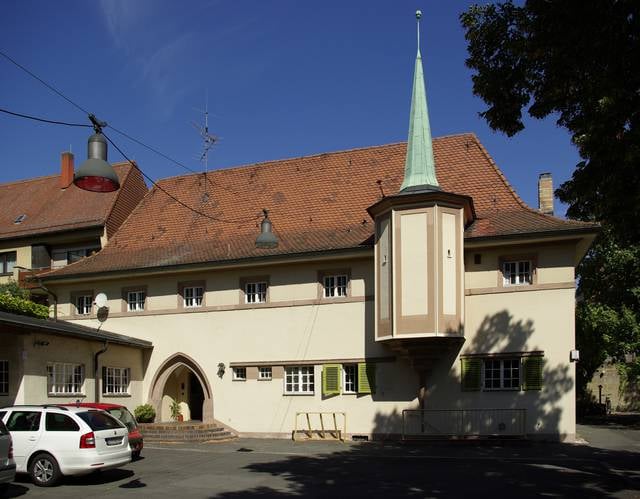
Also known as: Christlicher Verein Junger Menschen
YMCA, sometimes regionally called the Y, is a worldwide youth organization based in Geneva, Switzerland, with more than 64 million beneficiaries in 120 countries. It was founded on 6 June 1844 by Sir George Williams in London, originally as the Young Men's Christian Association, and aims to put Christian principles into practice by developing a healthy "body, mind, and spirit."
From its inception, it grew rapidly and ultimately became a worldwide movement founded on the principles of muscular Christianity. Local YMCAs deliver projects and services focused on youth development through a wide variety of youth activities, including providing athletic facilities, holding classes for a wide variety of skills, promoting Christianity, and humanitarian work.
YMCA is a non-governmental federation, with each independent local YMCA affiliated with its national organization. The national organizations, in turn, are part of both an Area Alliance (Europe, Asia Pacific, the Middle East, Africa, Latin America and the Caribbean, the United States, and Canada) and the World Alliance of YMCAs (World YMCA). Consequently, all YMCAs are unique, while following certain shared aims, such as the Paris Basis.
Imitator organizations include the Young Women's Christian Association (YWCA), the Young Men's Hebrew Association (YMHA), and the Young Men's Buddhist Association (YMBA). YMCA is also the subject of Village People's 1978 song "Y.M.C.A."[10]
Address: Südliche Stadtmauerstr. 21, Erlangen
Kreuz+Quer Haus der Kirche Erlangen

Address: Bohlenpl. 1, 91054 Erlangen
Georg Simon Ohm
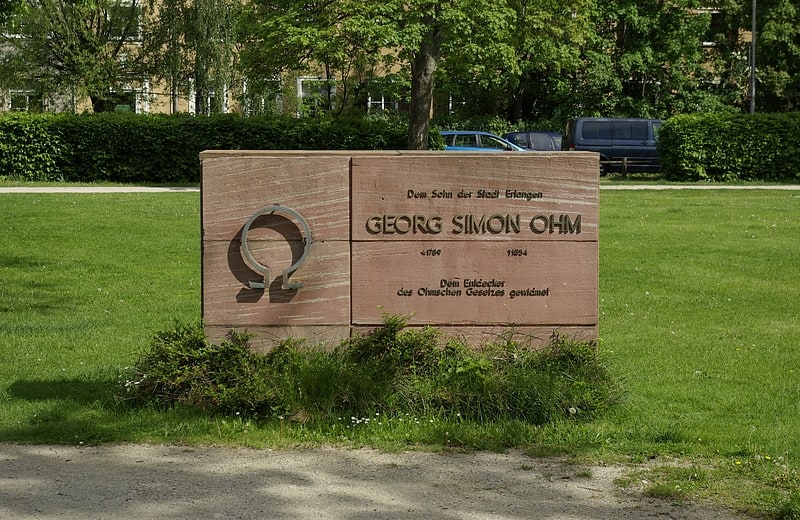
Memorial
Address: Am Röthelheim 6, Erlangen
Burschenschaft Germania Erlangen
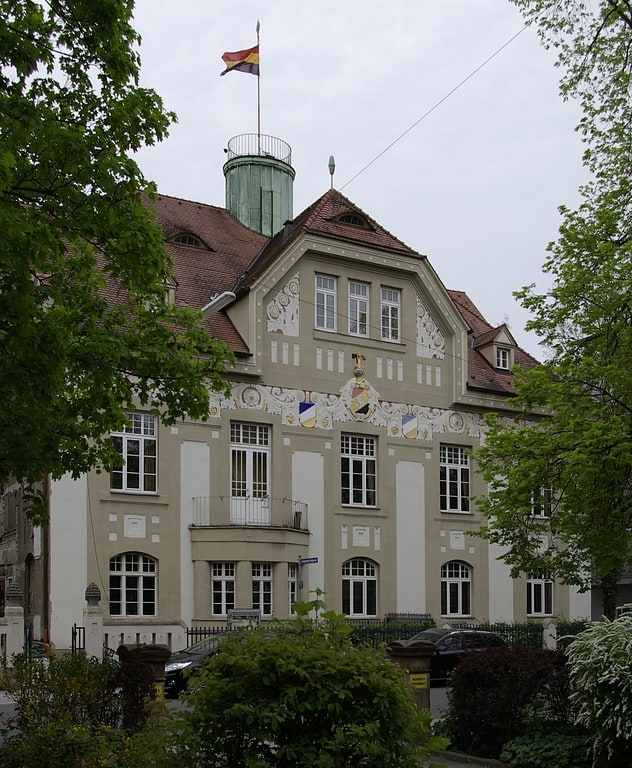
Address: 18 Universitätsstraße, Erlangen
Leimberger-Haus
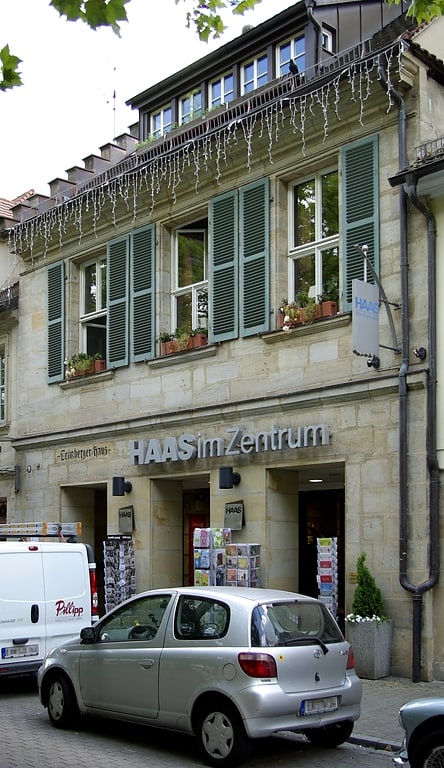
This list is a partial list of the list of monuments in Erlangen. The list is based on the Bavarian list of monuments, which was first compiled on the basis of the Bavarian Monument Protection Act of October 1, 1973, and has since been maintained and updated by the Bavarian State Office for Monument Preservation. The following information does not replace the legally binding information of the monument protection authority.
This part of the list describes the listed objects in the following Erlangen streets: Fahrstraße, Fichtestraße, Friedrich-List-Straße, Friedrichstraße, Fuchsengarten.
Address: 9 Friedrichstraße, Erlangen